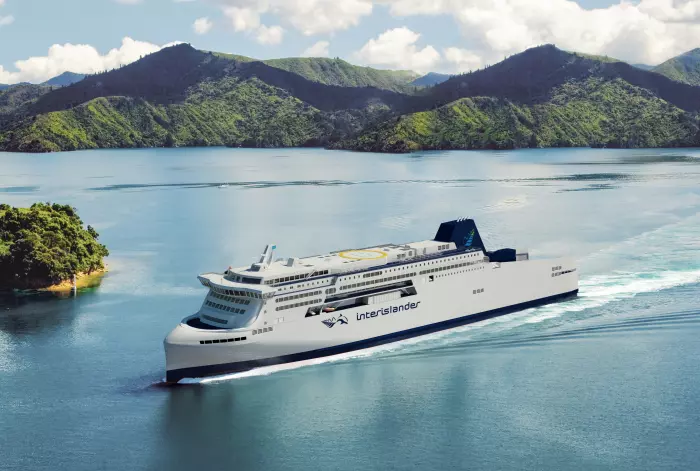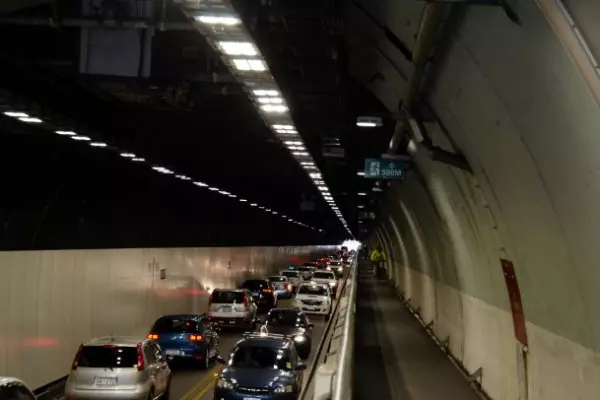It is not proving to be smooth sailing with KiwiRail’s plans to replace its three ageing Interislander ferries with two new larger ones in 2024 and to replace the existing terminals.
It has a provisional agreement with Hyundai to construct the new ferries, due for confirmation in June, but port cost problems remain to be resolved.
Kiwirail was concerned about the seismic risks involved in continuing to berth at Kaiwharawhara, so it envisaged berthing the new ferries at King’s Wharf in the Wellington inner harbour – but backtracked after concerted local opposition. A seismically robust Kaiwharawhara terminal will be costly.
The decision to choose rail-enabled ferries over more conventional roll-on-roll-off (RoRo) ferries has also made the port challenges more difficult.
The case for rail-enabled ferries is not obvious, as over the years the mix of cargo carried has changed from being predominantly rail, to the current situation where the biggest quantities and therefore revenue are from passengers (including their cars and campervans) and trucks.
Why rail ferries at all?
The rail ferries will be more expensive than conventional RoRo ferries, but a bigger issue comes at the ports, where the requirement to accommodate rail introduces challenges in space and infrastructure.
The existing terminals date from 1962, when the rail ferries were first introduced. These were ships 110 metres in length and 18m wide. The new ones will be 230m long.
Like grandad’s axe, the infrastructure has been re-purposed over and over, with most of it poorly configured for current operations and at the end of its economic life.
Modern well-configured terminals are key to making the most of the new ships.
All of the critical activity of exchanging rail, trucks, cars and people, along with provisioning, fuelling, water, servicing, and garbage disposal happens in a very short space of time when the ship is in the port.
For this, the infrastructure and supporting systems must be optimised. Examples in Europe show how this can be done well. At Dover, an average of 6,000 trucks pass through each day and each ship spends only about 40 minutes in the port each time.
New terminals are needed in any case, but there are additional costs when they are rail-enabled. Those costs were estimated in the past to be 20-to-25% higher, and are now much more.
Key considerations
The following are the key considerations:
- Rail ferries need expensive bespoke linkspans so the railway wagons can be pushed onto the ship.
- The linkspans are large, expensive and vulnerable. They pose a risk, especially in a seismically difficult area such as Kaiwharawhara. They will be at risk of misalignment after earthquakes. In contrast, RoRo ferries use cheaper, more generic linkspans, meaning that facilities can be shared, and the risk of failure of single pieces of infrastructure is reduced. The simpler facilities are also more resilient in another way: it is feasible to construct simple facilities at alternative emergency berths elsewhere.
- Larger and longer linkspans mean longer wharves are needed.
- The requirement to accommodate rail shunting yards at the terminals needs a lot of land to be reserved for rail-only operations and expensive overbridging of roads.
- Use of normal ferries would allow a rationalisation of land use between KiwiRail and the port companies, potentially freeing up land for other activities and allowing more efficient operations by both ferry companies.
- In a RoRo model there is more ability to share terminal facilities, passenger spaces, linkspans, wharves and marshalling, and therefore use prime waterfront land more efficiently. Interislander ferries could potentially be accommodated, together with ferries from the rival company Bluebridge, in an airport-type port facility. That is a ferry terminal that accommodates both companies just as airports cater for multiple airlines. This would have economies of scale and better operational flexibility. In a rail ferry model, the requirement for bespoke and conflicting infrastructure makes this far harder.
- On the ships, the use of vehicle deck space on rail ferries is less efficient, with empty spaces left on the rail deck and that can’t easily or safely be used by trucks and cars.
RoRos two-a-penny
There is an established market for normal RoRo ferries – there are many of them in the Mediterranean and elsewhere.
It is relatively easy to obtain additional RoRo ferries or dispose of surplus ones.
However, rail ferries would be ‘orphan’ assets. There is no ready market for them because of their specific design, which includes New Zealand’s narrow rail gauge, with the rails set 1067mm apart instead of the standard 1435mm.
Nor is it necessary to have a rail ferry to move rail freight. Containers could arrive at Wellington or Picton by train, be transferred onto trailers and hauled onto the ship, and the reverse would happen at the other end.
In the near future, it will be possible to automate much of this process. There are many examples in Europe of intermodal rail connections via conventional ferries.
It’s true that transloading cargo from rail to trailers to rail is not as efficient as shunting rail straight onto a ship.
Higher opex vs lower capex
However, the increased operational costs are offset by the reduced capital costs, more efficient use of space in the terminals and on the ship, increased resilience and lower ownership and operational risks.
It is also not clear why a railway wants to be involved in owning and operating a port.
Their business is trains and ferries, not running ports. Why employ your own staff to do some of these jobs when the port has the same people?
Why own marine infrastructure and have to maintain it yourself, when the port already has those skills? Why not share facilities and staff as much as practical and focus on your core business?
Considering costs, flexibility, resilience and risks, the business case for normal RoRo ferries over rail ferries will be better than it first seemed.
The government, facing its post-covid debts, will not want to stump up the full amount for the rail version.
In any case, KiwiRail is a state-owned enterprise and has a fully commercial competitor, Bluebridge, operating on the same route as the Interislander.
Government support for KiwiRail’s ferries, but not Bluebridge’s, could raise difficult competition policy issues. Full transparency would allow the public to debate the costs and risks it may be asked to bear.
David Greig is an independent, Wellington-based transport analyst and consultant.













